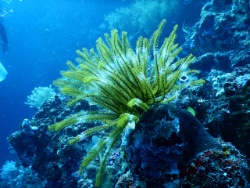Avian flu spreads, UN prepares for human pandemic
As wild fowl spread avian flu over continents, UN prepares for human pandemic
With wild birds spreading the avian flu virus further into Africa and Europe, the United Nations system was stepping up assistance to countries in their efforts to contain the virus in birds and conducting simulation exercises to prepare strategies for quick action on a human future pandemic, the official in charge of the effort said today.
“Frankly, there will be a pandemic, sooner or later,” Dr. David Nabarro, the UN System’s Coordinator for Avian and Human Influenza told correspondents at UN Headquarters in New York as he updated them on developments since his mission to China in mid-January.
“It might be due to H5N1 or to some other influenza virus and it could start any time,” he said. “We have to behave as though this could start any time, because if we don’t, we will put off getting prepared.”
Since the first reports of H5N1 in Asia at the end of 2003, over170 bird-to-human transmissions have been reported, 92 of them fatal, mostly in South-East Asia and China and nearly 200 million domestic poultry have died or been culled in order to contain the spread. UN health officials have warned that the virus could evolve into a lethal human pandemic if it mutates into a form which could transmit easily among people.
In that context, he said that he had conducted two emergency simulation exercises with senior management of the UN system. One scenario assumed that an established pandemic in Asia was spreading into Eastern Europe and Africa, but not into North America.
Another scenario addressed the UN’s actions once a pandemic had reached North America, including New York, and dealt with actions on staff safety and provisions for essential and political services.
From these exercises, detailed reaction plans for the UN system would be developed within the next few weeks.
At the same time, a global plan to contain an initial outbreak of the virus in humans moved closer to final form when 70 public health experts concluded three days of discussion in Geneva today under the auspices of the World Health Organization (WHO).
A major topic at that meeting was how to get all containment assets quickly to a point of outbreak. A report on the issue would be published tomorrow, Dr. Nabarro said.
Meanwhile, wild birds, which can apparently carry the virus while remaining asymptomatic, had been spreading the virus along migration routes from Asia into Europe and Africa.
This development has made it imperative to increase surveillance of wild birds, Dr. Nabarro said. For that purpose, WHO, the UN Food and Agriculture Organization (FAO), the UN Environment Programme (UNEP) and wildlife organizations were working together around the world, and an international conference on the issue had been planned in June.
He stressed that wild birds were not targeted in prevention and voiced hope that containment focussed on domestic birds could control the spread to wild fowl.
In domestic containment, he said the UN Children’s Fund (UNICEF) was extremely concerned about the risk to children, as they traditionally took care of poultry in many countries.
In that light, Dr. Nabarro said was pleased to report the assembling, by a number of governments, FAO and others, of a team of emergency veterinarians ready to travel to trouble spots at a moment’s notice – the “Brigade,” as it was informally called.


 Global Jews for Palestine: Jewish Organisations' Passover Statement, After 40 Days Of Starvation
Global Jews for Palestine: Jewish Organisations' Passover Statement, After 40 Days Of Starvation APEC: Stronger Immunization Policies Needed As Vaccine Confidence Falls
APEC: Stronger Immunization Policies Needed As Vaccine Confidence Falls 350.org: Indigenous Groups From The Pacific, Brazil & Canada Hand Demands To COP30 Presidency To End Fossil Fuels
350.org: Indigenous Groups From The Pacific, Brazil & Canada Hand Demands To COP30 Presidency To End Fossil Fuels Conservation International: Conservation International Expedition Reveals Ecosystem Recovery In Tokelau
Conservation International: Conservation International Expedition Reveals Ecosystem Recovery In Tokelau UN Special Procedures - Human Rights: UN Expert Urges States To Finance Inclusive And Sustainable Development, Not A War Economy
UN Special Procedures - Human Rights: UN Expert Urges States To Finance Inclusive And Sustainable Development, Not A War Economy Amnesty International Aotearoa NZ: Global - Recorded Executions Highest Since 2015
Amnesty International Aotearoa NZ: Global - Recorded Executions Highest Since 2015